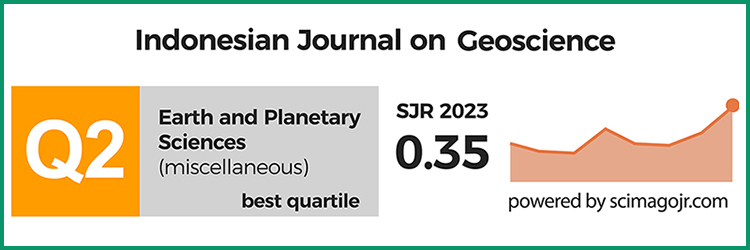Thermal Maturation Trend and Cluster Validation Using K-Means Clustering: Case Study in Salawati Basin
DOI:
https://doi.org/10.17014/ijog.11.1.111-122Keywords:
Salawati Basin, methylphenanthrenes index, K-means clustering, maturityAbstract
In the last few years, exploration activities have experienced obstacles and have not attracted much attention from researchers in Indonesia. One of the basins in Indonesia that is still interesting is Salawati Basin in West Papua, Indonesia. Several studies related to petroleum systems have been carried out in this basin, especially those that control the migration of hydrocarbon in Salawati Basin. This research was conducted on three wells located in the western of Salawati Basin to evaluate the characteristics and the maturity of the source rock, especially the Sirga Formation. This formation is penetrated by wells MM-02, MM-03, and MM-04, by using the K-Means Clustering method to validate several parameter variations of the maturity level. K-means cluster performs data from various parameters of maturity level with predefined three numbers of cluster. The thermal evolution of source rocks can alter organic matter physical and chemical properties, converting it into hydrocarbon compounds. The selected maturity parameters have good sensitivity to the determination of thermal maturity including phenanthrene (P), in addition to the MPI (methylphenanthrene index) parameter which was obtained from mass chromatograms m/z 178 and m/z 192 based on the peak area of P and methylphenanthrene (MP). Based on the appearance of the crossplot, both Radke and Kvalheim Formulas show that the maturity in studied area is divided into three main zones: peak maturity zone, early maturity zone, and outliers. This study also found that increasing thermal maturity is correlative
with the increasing depth.
Downloads
Published
Versions
- 17-05-2024 (2)
- 18-03-2024 (1)



















